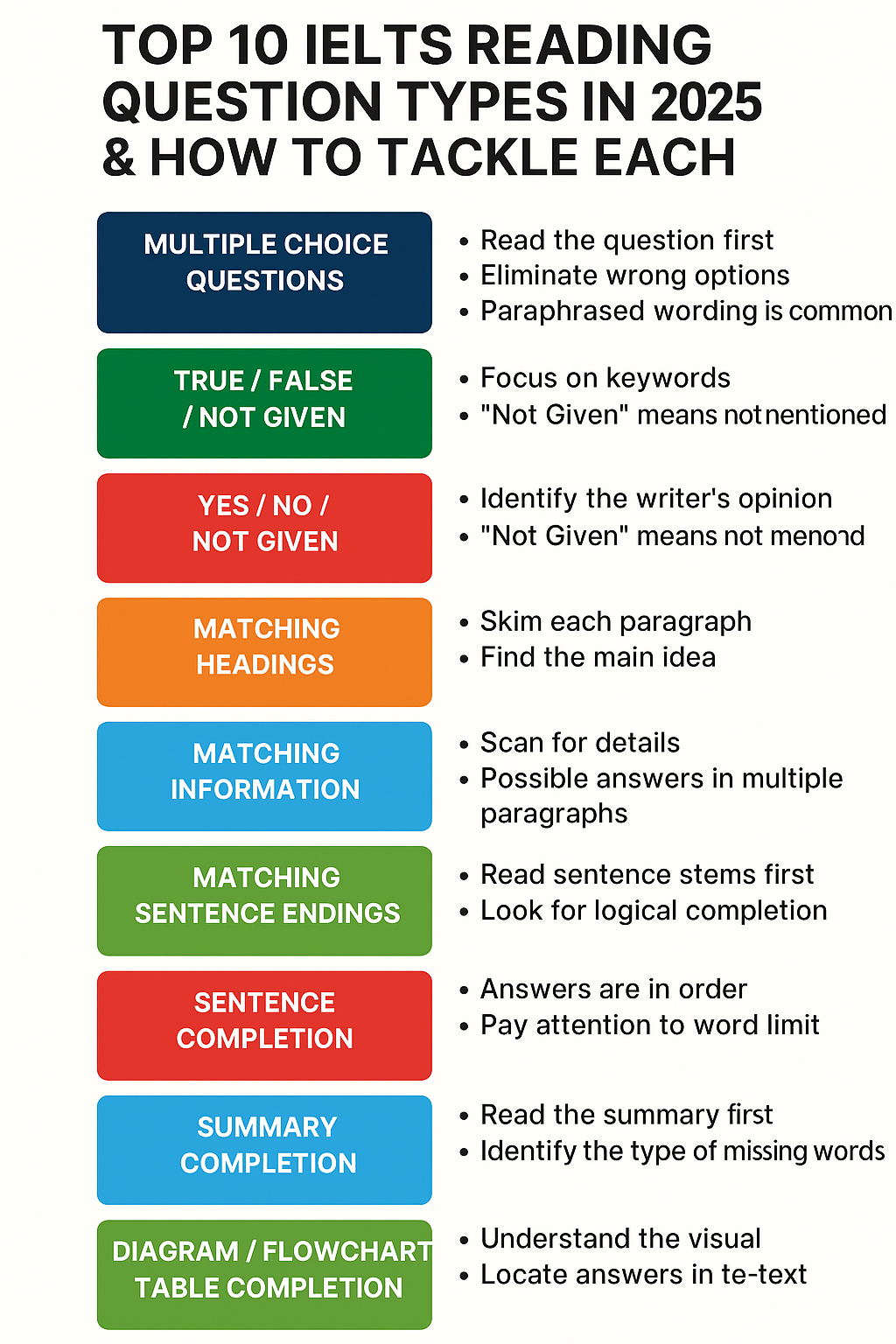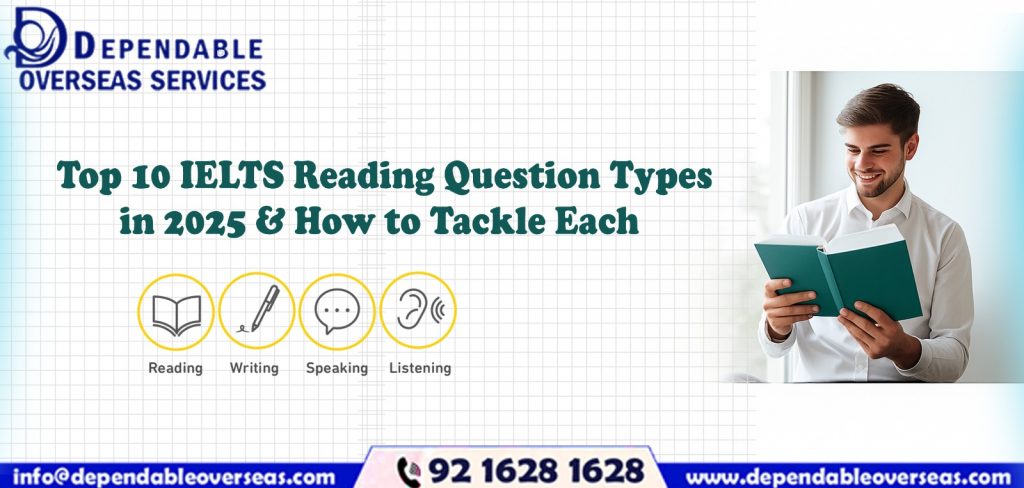Do you know the IELTS Reading section can be challenging?
It’s not just because of the content but due to the way the questions are asked. The test has shifted to being more vocabulary-focused and inference-based in 2025, which makes it even more crucial to fully comprehend each question type.
Here are the top 10 IELTS Reading question categories you will encounter in 2025, along with tried-and-true methods for confidently responding to them.

1. Multiple Choice Questions (MCQs)
What it tests:
Understanding of detailed or specific information in the passage.
How to tackle:
- Read the question first, not the passage.
- Eliminate obviously wrong options.
- Be careful of paraphrased wording — the right answer may not use the same words as the text.
2. True / False / Not Given
What it tests:
Your ability to identify factual accuracy compared to the passage.
How to tackle:
- “True” = Exactly matches the passage.
- “False” = Contradicts the passage.
- “Not Given” = Not mentioned at all.
- Focus on keywords and absolute terms like “always,” “never,” etc.
3. Yes / No / Not Given
What it tests:
Understanding of the writer’s opinion or claims.
How to tackle:
- Similar to TFNG, but relates to opinions, not facts.
- Watch for subtle language that shows the writer’s viewpoint.
4. Matching Headings
What it tests:
Your ability to identify main ideas of paragraphs.
How to tackle:
- Skim each paragraph and ask: What is the central point?
- Look for topic sentences and concluding statements.
5. Matching Information
What it tests:
Your ability to locate specific information within the text.
How to tackle:
- Use scanning techniques to locate names, dates, and keywords.
- Be careful — answers may appear in multiple paragraphs.
6. Matching Sentence Endings
What it tests:
Ability to logically complete a sentence based on the passage.
How to tackle:
- Read the sentence stems first.
- Eliminate grammatically incorrect options.
- Look for logical flow and meaning, not just matching words.
7. Sentence Completion
What it tests:
Your grammar and understanding of specific details.
How to tackle:
- Answers come in order in the passage.
- Use keywords to locate the correct section.
- Follow word limits strictly.
8. Summary Completion
What it tests:
Ability to understand the gist and key ideas of a section.
How to tackle:
- Read the summary first.
- Identify the missing words’ function (noun, verb, etc.)
- Match meaning, not just vocabulary.
9. Diagram / Flowchart / Table Completion
What it tests:
Ability to interpret visual or structured data based on text.
How to tackle:
- Understand the visual first.
- Locate where the information appears in the passage.
- Check for word limits and grammar.
10. Short Answer Questions
What it tests:
Quick understanding of specific factual details.
How to tackle:
- Focus on keywords and question stems.
- Answers appear in order in the passage.
- Respect word count limits (e.g., no more than 3 words).
✅ Final Tips to Boost Your IELTS Reading Score in 2025:
- Practice daily under time pressure.
- Build your vocabulary – especially synonyms.
- Don’t rely on memorization. Understand the logic behind questions.
- Get professional feedback to improve faster.
🎓 Need Help with IELTS Reading?
At Dependable Overseas, we provide result-driven IELTS coaching that focuses on each section of the test. Our expert trainers help you:
✔ Identify your weak points
✔ Master question types with ease
✔ Practice with real test-like material
✔ Target your desired band score
📞 Call now to book your IELTS prep session
🌐 Visit: www.dependableoverseas.com

